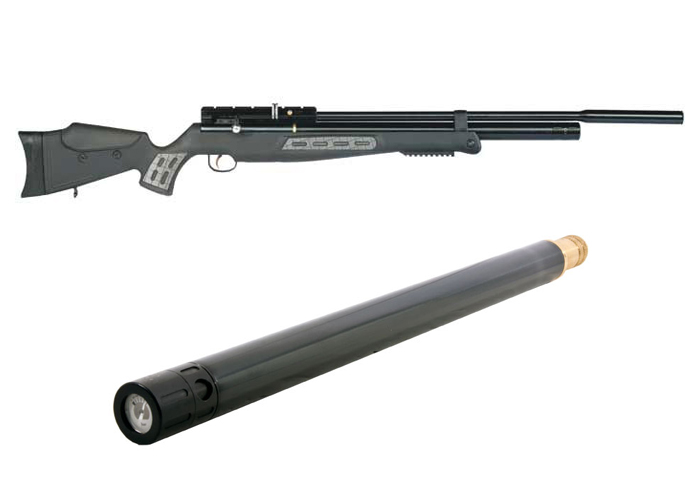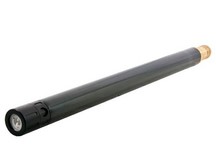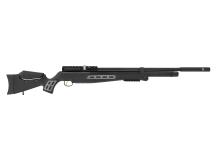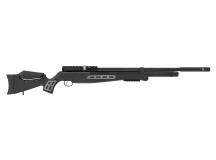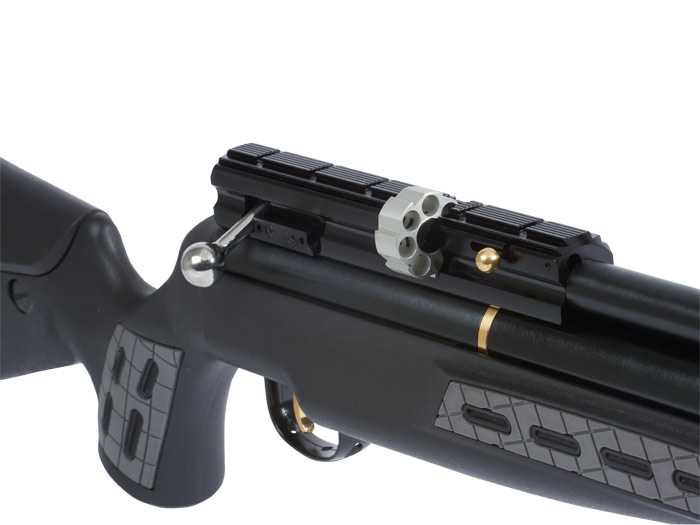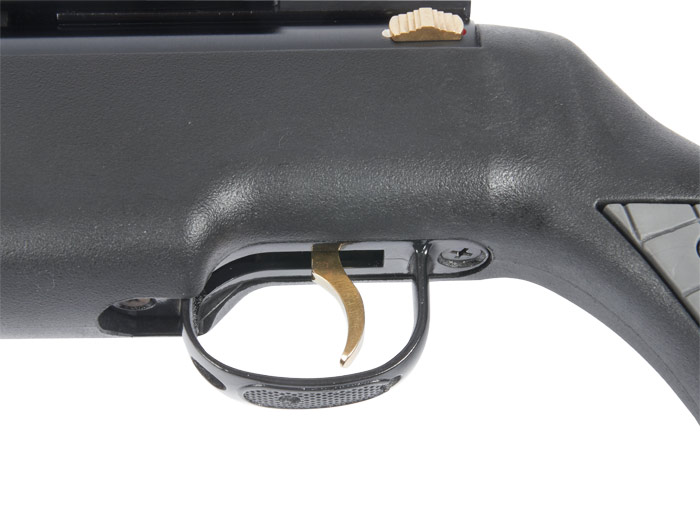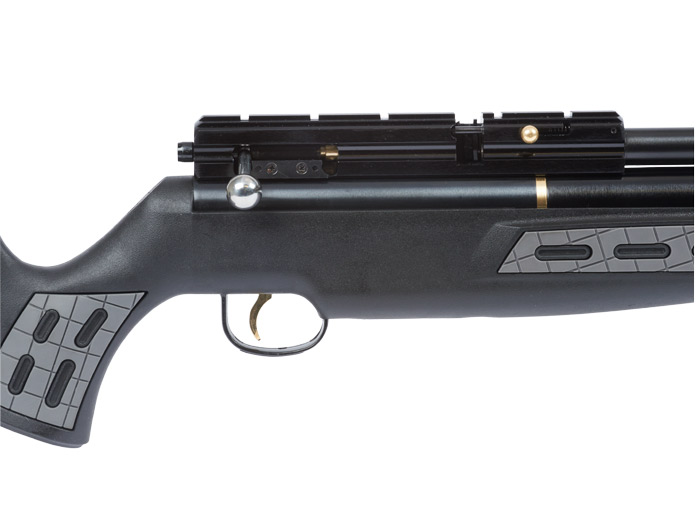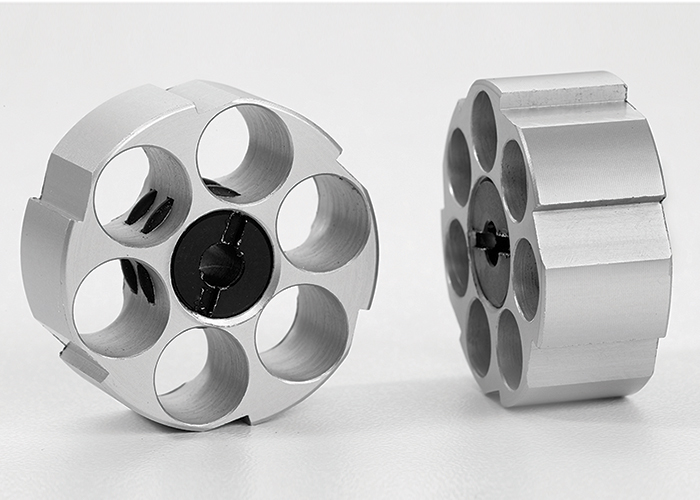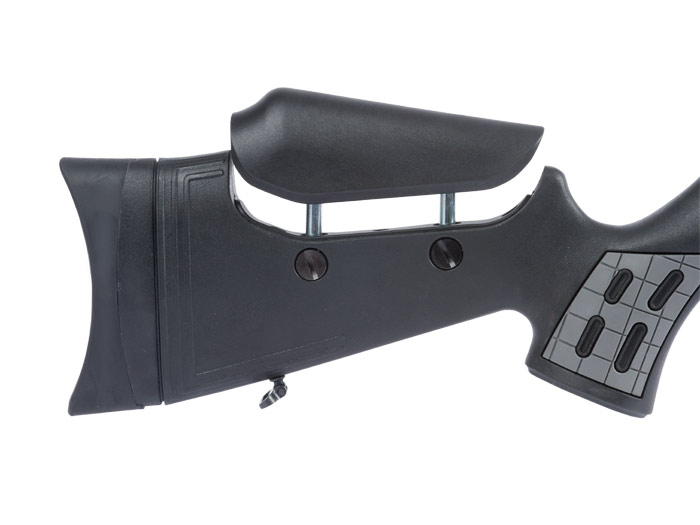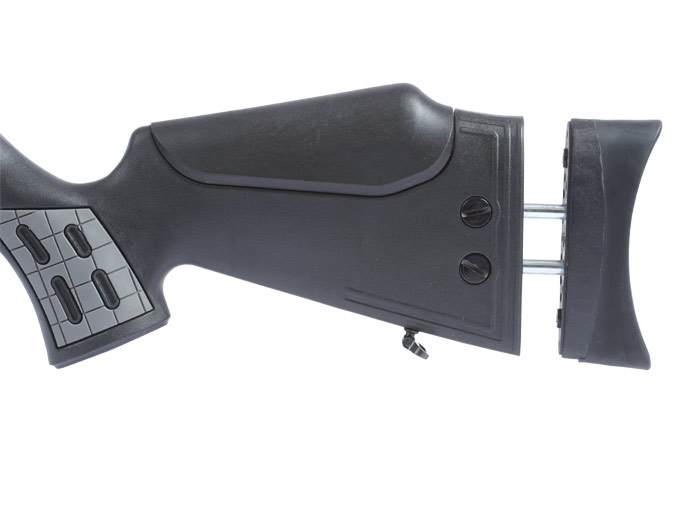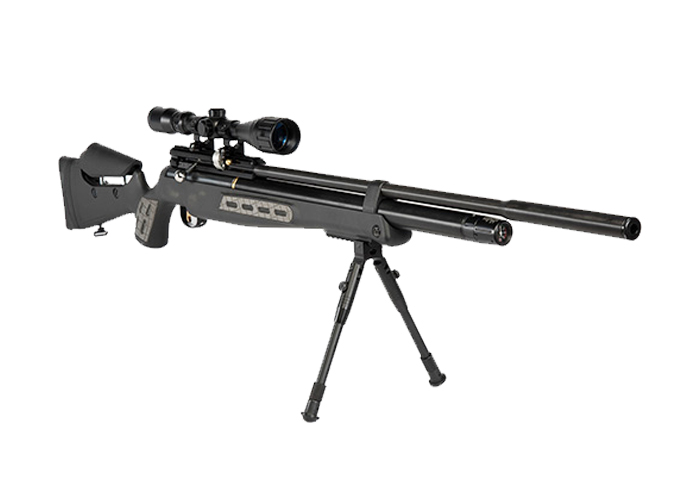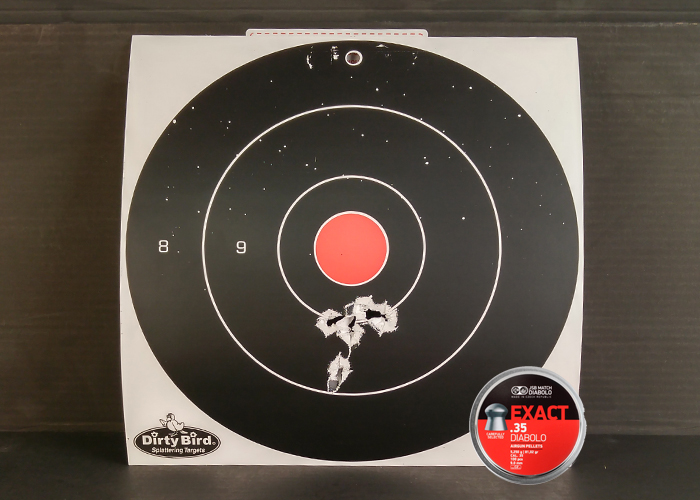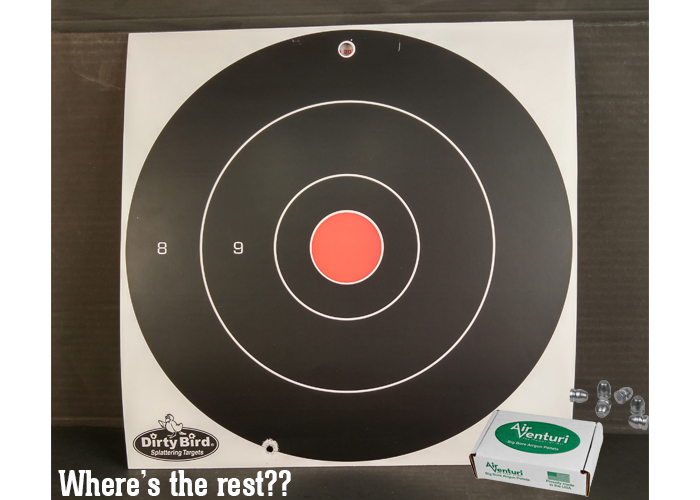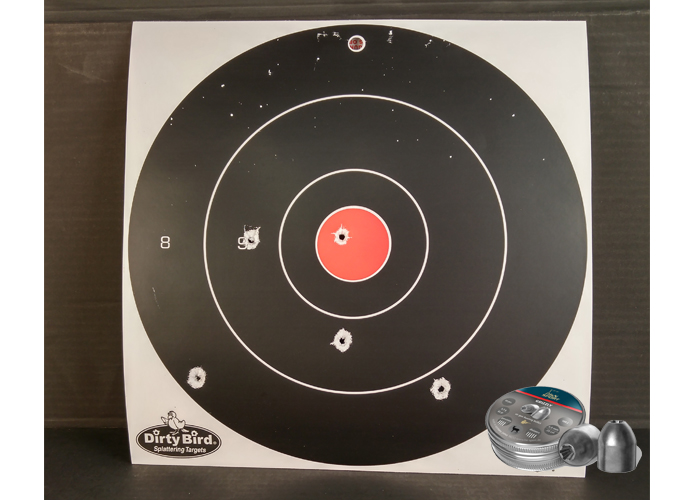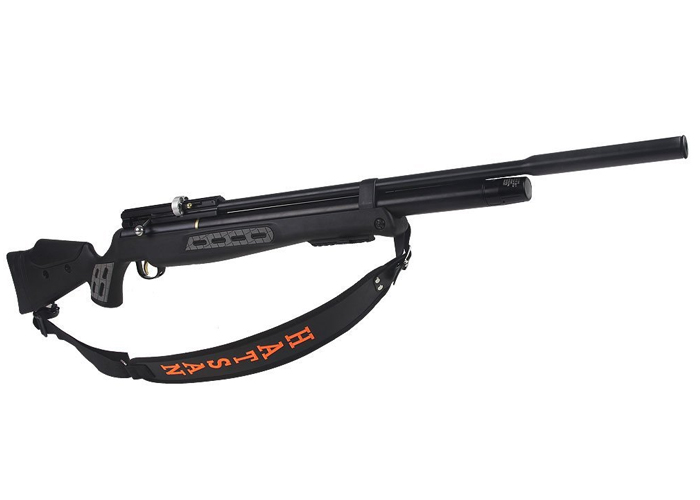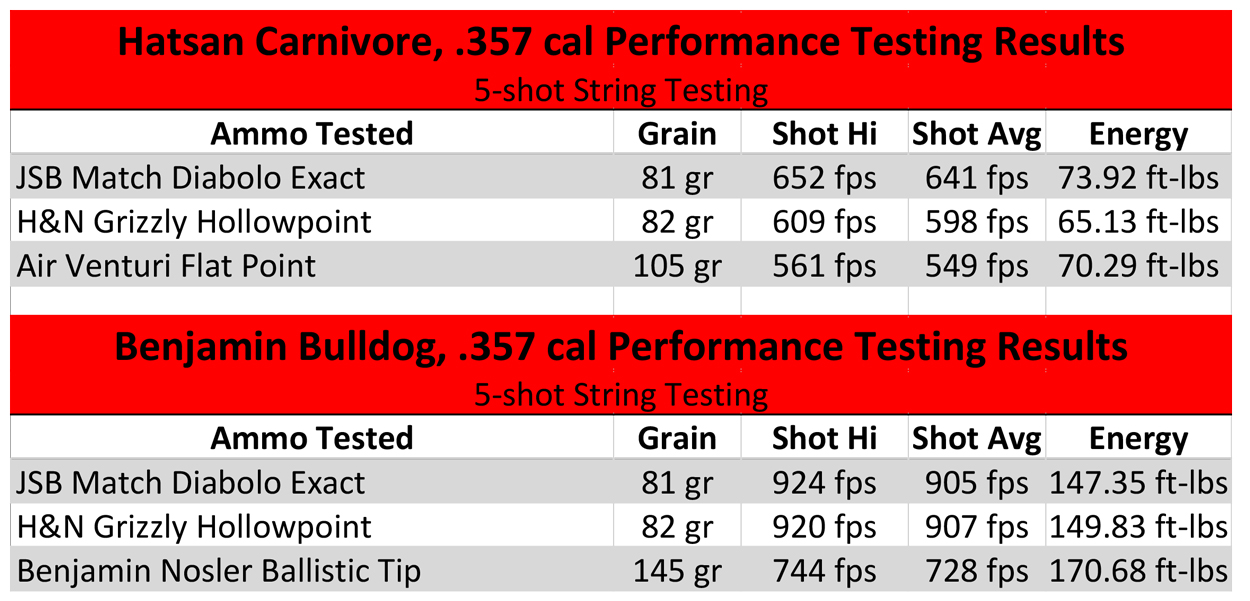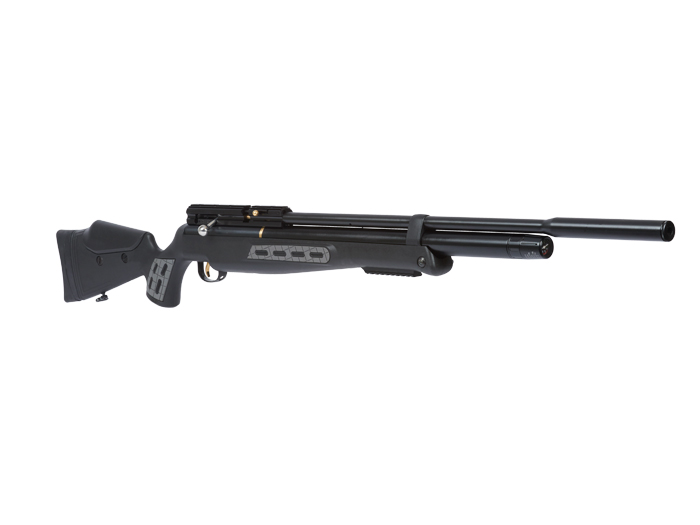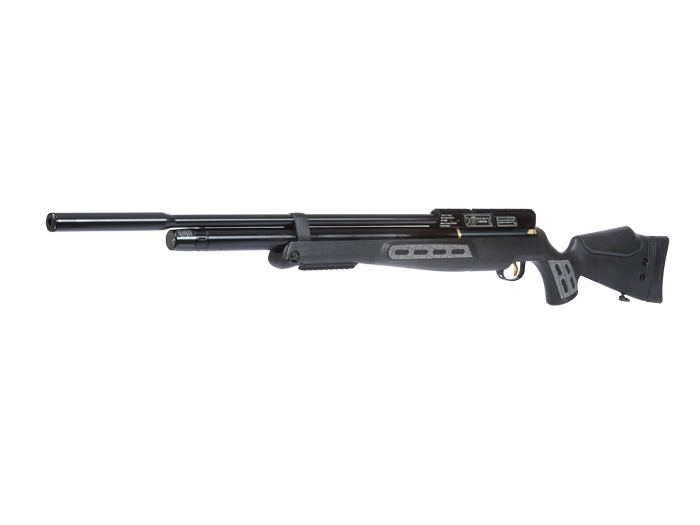Free Shipping on orders over $150
Talk to an Airgun Specialist 1-866-477-4867
Definitive Guide to Hatsan Carnivore
Back in November of 2014 we got an early look at the Hatsan Big Bore Carnivore air rifle when the CEO of Hatsan USA stopped by our offices. 2015 was already rumored as the year of the big bore and the entire airgun industry was buzzing about who would bring a large caliber airgun to the table. The Hatsan Carnivores were some of the first to come in what would be a wave of new big bore air rifles to be released in 2015. Since then, the Carnivore has continued to stand out from other guns in its class as a go to for those who are looking for a well priced entry into big bore air rifles without sacrificing build quality and features. The Carnivore has garnered a strong following and cemented itself in its reputation as a serious air rifle for serious shooters.
Order a Hatsan Carnivore
Video
Detailed Review
The Hatsan BT Carnivore is based heavily off the standard caliber BT65 and as such shares many of the same design cues. The action, stock, and barrel shroud are all the same. Looking at them side by side you won't be able to tell them apart, except for one detail. Those massive .30 or .35 caliber holes in the magazine. They are a dead giveaway that this rifle is not ordinary BT65. The Carnivore's bolt action, while reliable and strong, can at times be very stiff. The heavy firing pin spring makes cocking the Carnivore a bit of a chore and at times it can be easy to short stroke the bolt and not chamber a pellet. We think a better solution to this issue would have been to pair the Carnivore with the AT44 style side lever action, it's as smooth as butter, and equally as strong and would make shooting the Carnivore that much better. The Hatsan Quattro trigger is a great set up, especially for those who prefer a trigger feel similar to that of a powder burner. Most Hatsan triggers will pull just under 5 lbs out of the box, with our test gun breaking at an average of 4.6 lbs. After some adjustment we set our second stage break down to just under 2 lbs, the break is very crisp and glass like with a light and short first stage, in our opinion just perfect for a gun that will spend much of its time in the hunting blind. The Hatsan rotary magazines and magazine wells are notoriously narrow, and the Carnivore is not the exception. We really did not find this to be a problem as most .35 caliber ammo was not particularly long anyway, however we did find that the Nosler ballistic tipped rounds where to long and hung up in the magazine. If you pick up a Carnivore for yourself be aware of sizing when choosing your ammo. The Hatsan Carnivore stock is adjustable for both length of pull as well as comb height. These features mean that no matter what size the shooter, the Carnivore can be set up to give them the perfect length and sight alignment to get the best shooting position possible. This also makes it a great option for families who shoot together. The weight of the Carnivore comes in at 9.3 lbs, not a lightweight by any means, however the forend does feature an integrated picatinny rail that allows for easy attachment of a bipod so shooting from a bench is easy. If you're going to be taking your Carnivore into the field a shooting stick is a great accessory.
Innovative Air Cylinders
Like many of its Hatsan brothers, the Carnivore features removable air cylinders. The convenience of removable air cylinders is a great feature for hunters as it's much easier to carry an extra pre-filled cylinder or two opposed to carrying a carbon fiber tank or even a small fill bottle. Recharging with the extra cylinder is as simple as screwing out the empty and replacing it with a full one. The 255 cc removable air cylinder includes a built-in gauge and fill port dust cover. Shots per fill range from up to 21 in the .30 caliber to up to 12 on the larger .357 caliber. The maximum fill pressure on the Carnivore is 200 BAR or 2,900 psi. As we have said in the past, we really like Hatsans fill probe system. Its simple to use and easy to maintain. Simply insert the probe into the port, charge the gun, bleed the line, and remove the probe. No locking collar to fiddle with, not worrying if everything is lined up just right, we would really like to see a system like this standardized across all airgun platforms.Shot Groupings, Velocity and Decibel Readings
Though we've heard good things about the .30 cal Carnivore, we requested the .357 caliber as we really wanted to see what kind of power the Carnivore could push. We attached a NC Star Stream Line Bipod & one of the new Hawke Vantage SF 3-12x44 AO scopes, and we were set to test the Carnivore at 50 yards. Here's the velocities we obtained with our test pellets: Testing the Hatsan Carnivore out to 50 yards yielded some very interesting results. On hand for the test we had some 81.02 grain JSB Diabolo Exacts, some Air Venturi 105 grain Flat Point bullets, and some of the H&N 82 grain Grizzlys. We used the JSB's to get a good zero on our Hawke scope and we headed to the range. First up were the JSB's. They shot excellent with a group under 1.5 inches at 50 yards. We were very pleased with the results, as you can see from the above groupings, we're pretty sure we could get even tighter groupings as there was only one slight flier marring an otherwise near perfect grouping. But that's when things kind of went off the rails. We loaded up the Air Venturi slugs, they were noticeably harder to get into the chamber and 6 shots, all with good trigger pulls, we only had one shot on target! Checking the backer board we found that the slugs had mostly fallen low and left of center but in about an 9 inch group, it was clear that our rifle wasn't liking the Air Venturi slugs. It's also important to point out that the Carnivore and it's magazine can't handle longer .357 pellets like the Air Venturi Flat Nose & Hollowpoint Pellets or the Benjamin Nosler Ballistic Tip Bullets. We decided to give the H&N Grizzlys a try, hoping for better results. The first shot fell low and left again, this time on target, we weren't going to hold our breath for a group as good as the JSB's. Firing the rest of the magazine the pellets dropped all over the target, except for one, that one shot just left of center in the red bullseye and was the only one that seemed to go where it was supposed to. Probably the main problem with the Grizzly pellet is that it's sized at .356 instead of what the Carnivore is built for, .357 After a few more test shots we came to the conclusion that our rifle was a picky eater only due to the lack of better options at .357 ammo. But as long as you have the right pellet, like groups the JSB's produced, your accuracy should be spot on. The decibel readings from the .357 Hatsan Carnivore were really impressive. The average reading was about 72 dB. Hatsan's Quiet Energy sound suppression really is some of the best for air guns. While 72 dB isn't quiet enough to shoot in your backyard with a neighbor 50 yards away, it will really work well to not scare away game and allow for follow-up shots. As a comparison the .357 Benjamin Bulldog registers a whopping 93 dB!Comparing the Carnivore to other Big Bores
But since I brought up the Bulldog it's worth comparing the Hatsan Carnivore's power numbers to other big bores. We'll set the .30 caliber Carnivore to the side since at the time of publishing there are fewer rifles to compare it to. The most direct comparison for now is the Benjamin Bulldog. To make a long story short, white the Carnivore is much quieter and many would argue much less ugly than the Bulldog (futuristic bullpups aren't everyone's cup of tea), the Bulldog runs circles around the Carnivore's power numbers: Similarly the Sam Yang .357 Recluse can achieve powers in the 150 ft-lb range. But with the drawback that you can only get 1-2 shots at that high velocity before the numbers decrease drastically with each ensuing shots. If you're taking your air rifle into the field, you want to be able to get as many consistent shots as possible without refilling. Thus the drawback to the Recluse. Our suggestion might surprise you. The reality is that you'll get similar power numbers from the .30 cal Carnivore as you will the .35 cal. So unless you need higher ft-lbs for taking larger game, purchasing the smaller .30 caliber Carnivore will result in higher shots per fill (and technically you'll save money on the cost of ammo as well). Not a bad thing since you're also saving money on the Carnivore over similarly sized alternatives. It will be interesting to see what Hatsan can deliver next in the big bore category. Clearly their sound suppression is superb and usually their power numbers are near the top in other caliber sizes. We look forward to Hatsans next entry into the Big Bore category with anticipation. Big Bore Power on a Budget The Carnivore is one of the most competitively priced big bore airguns on the market. Sitting in the same class of guns that typically cost $1000 and up, with a base price around $720, the Carnivore makes it much more accessible to those wanting to enter the big bore game while not simultaneously emptying their pockets. Don't let the price fool you, just because its lower priced, doesn't mean it's lower on quality and features like the QE sound suppression system, excellent Quattro trigger, multi-shot rotary magazines, a spare parts kit, and adjustable stock. 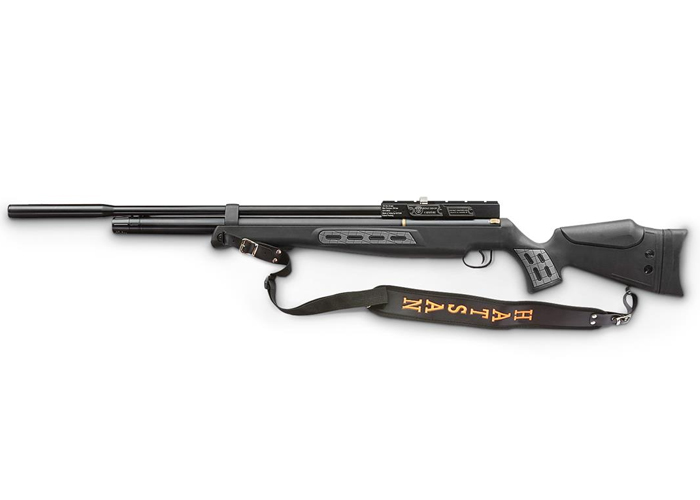

Power, Accuracy & Pellet Recommendation Hatsan and JSB are almost synonymous when it comes to pairing the perfect pellet to an airgun, and the Carnivore is not exception. With our .35 cal Carnivore, the best groups came with the JSB 81.02 grain Exact Diabolos, shooting well under an inch at 25 yards and about 1.34 inches center to center at 50 yards. With our .357 tester Carnivore producing about 74 ft lbs, it's a great option for medium game. If power is important to you, it's important to note this isn't as powerful as the .357 Benjamin Bulldog we tested. The .30 Cal version of the Carnivore obtains around 800 fps velocities and ft-lbs around 70. So the lower caliber option allows for about the same ft-lb energy but yet with more shots per fill? interesting. 

Quiet Energy Sound Suppression The Carnivore takes advantage of Hatsans proven Quiet Energy Sound Suppression system. Keeping the Carnivore hushed to a mere 72 dB, the QE system makes the Carnivore a great choice for those looking to get up close and personal with there game without worrying about potentially scaring off other game animals nearby. 72 decibels is loud enough you won?t want to shoot in your backyard if you have close neighbors, but it?s the quietest .357 caliber air rifle we?ve tested yet. 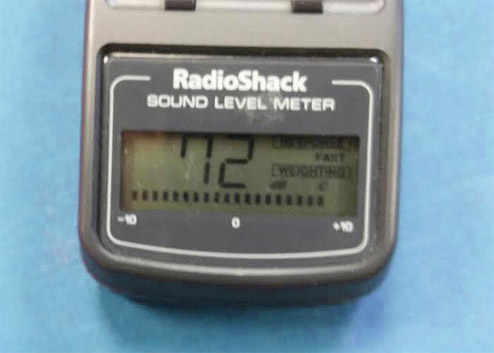

Removable Air Cylinders One of the highlights of Hatsan PCP air rifles is that they feature 255 cc removable air cylinders with included guages and fill port dust covers. The added convenience of removable air cylinders is a great feature for hunters as it's much easier to carry an extra pre-filled cylinder opposed to carrying a full size tank or even a small fill bottle. These easily screw on and off creating a quick and easy way to keep shooting. 